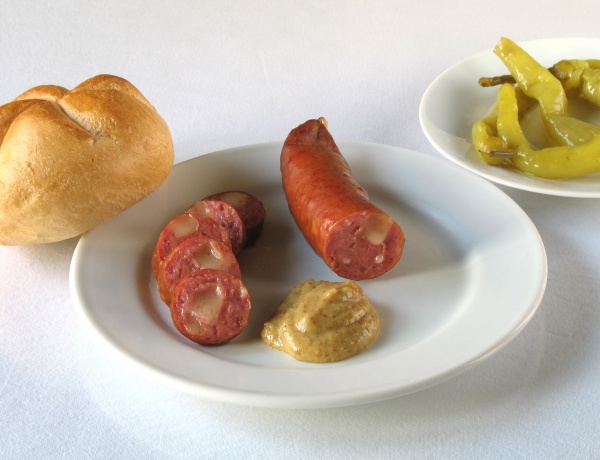Facts About Carniolan sausage
The Carniolan sausage, known as "kranjska klobasa" is a traditional Slovenian delicacy reminiscent of kielbasa or Polish sausage. Despite facing objections from Austria, Croatia, and Germany, it was officially recognized as a protected geographical indication in January 2015.
In Slovenian cuisine, the term "klobasa" refers to a small sausage served whole, while "kranjska" derives from the Carniola region of the former Austrian Empire. This sausage is crafted from a mix of at least 75-80% pork, combined with bacon, water, sea salt, garlic, saltpeter, and black pepper. It is then stuffed into pork intestines, formed into pairs, linked with a skewer, hot-smoked, and heat-cured.
There is also a variation called Käsekrainer, which includes cheese cubes and originated in Austria in the early 1980s. Käsekrainer can be boiled, baked, or grilled and is typically served with mustard, ketchup, and bread. In Austria, it is sometimes offered as a Käsekrainer-Hot-Dog, where the sausage is served in a sauce-filled bread roll.
After World War II, immigrants introduced kranjska klobasa to Australia, where it became known as Kransky. The cheese-filled variant, known as cheese Kransky, is particularly popular in both Australia and New Zealand.

 Hungary
Hungary